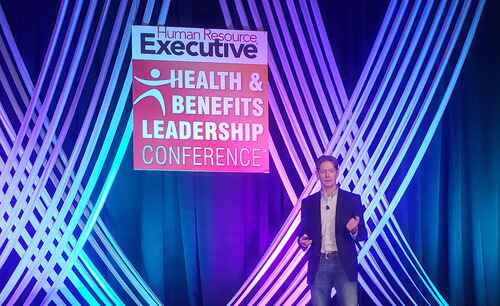For Microsoft, the COVID-19 pandemic and remote work didn’t mean a slew of new benefits but instead meant modifying what the company already had and making it work during that difficult time.
Fred Thiele, Microsoft’s vice president of global benefits and mobility, spoke with HRE‘s Dawn Kawamoto during the Health & Benefits Leadership Conference, held in May at the Mandalay Bay Resort & Casino in Las Vegas.
“It’s that notion of meeting people where they are,” Thiele said. “Normally, we say that as a kind of metaphor but here it could mean meeting them literally where they are, a thousand, two thousand miles away.”
See also: 5 important takeaways from Microsoft’s HR strategy
Fred Thiele: Diversity and inclusion should also mean remote work
Thiele added that Microsoft’s diversity and inclusion strategy had to include people who were far away from the company’s main campus in Redmond, Wash.
“If we’re hiring talent that’s not in Redmond, that’s in Atlanta, that’s in Philadelphia, Chicago, do they feel a sense of affinity with their colleagues who might still be based in Redmond?” Thiele asked. “That’s all part of that, and our benefits obviously have to reflect that as well. We can’t have a benefits portfolio as if it were 2019.”
More coverage from the Health & Benefits Leadership Conference.
5 takeaways from Thiele’s discussion at HBLC 2023
During the conference, Thiele had five suggestions for HR leaders to take on for improving their organizations.
- Listen to your employees and design your holistic health around their needs and demographics.
- Cultivate benefits that demonstrably address your employees’ needs rather than chase shiny, trendy, quirky fad benefits.
- Global companies should take a global view of benefits and programs when possible.
- Be influential outside of total rewards.
- Give employees choice when appropriate.
In giving employees choice, it might be wise to hold onto a bit of paternalism, Thiele advises. For example, allowing employees to greatly reduce their life insurance may not serve the surviving spouse, partner or family members well, who may be surprised there is little to nothing available to support them after the employee’s death.
Credit: Source link











